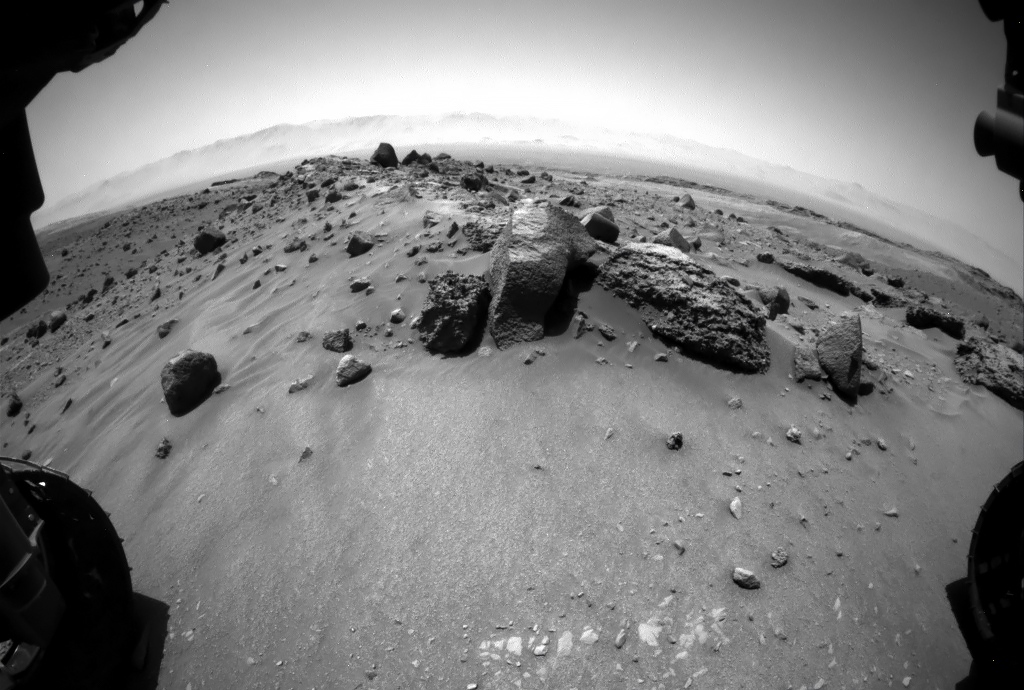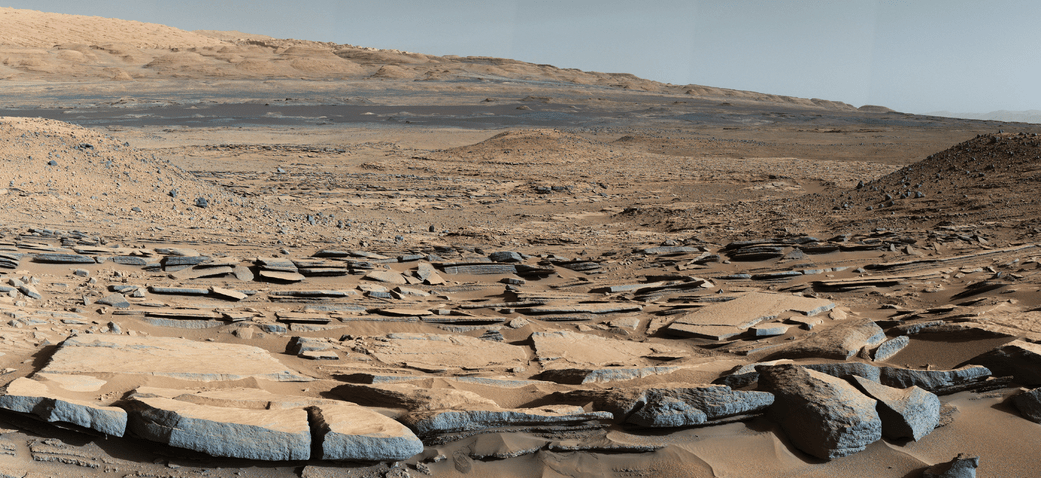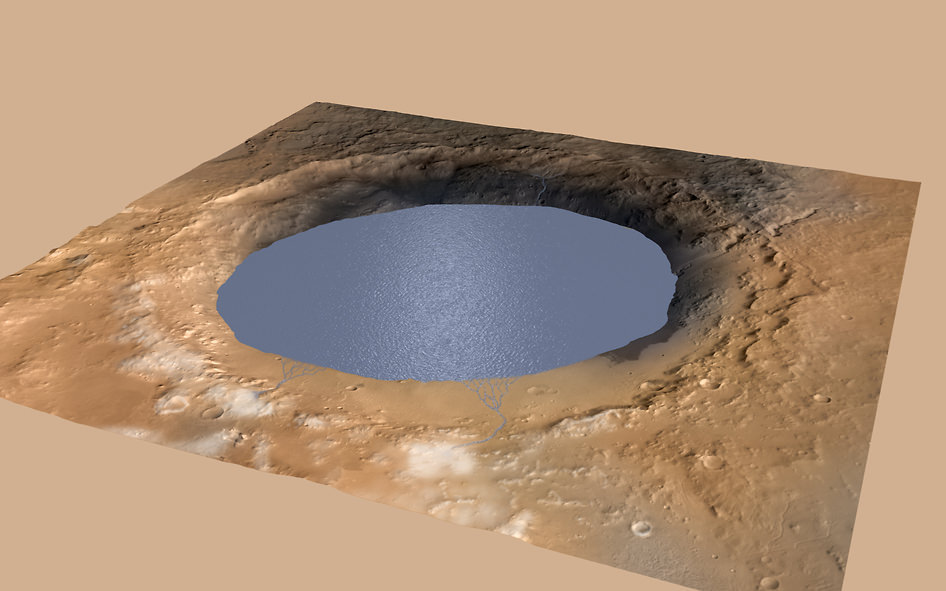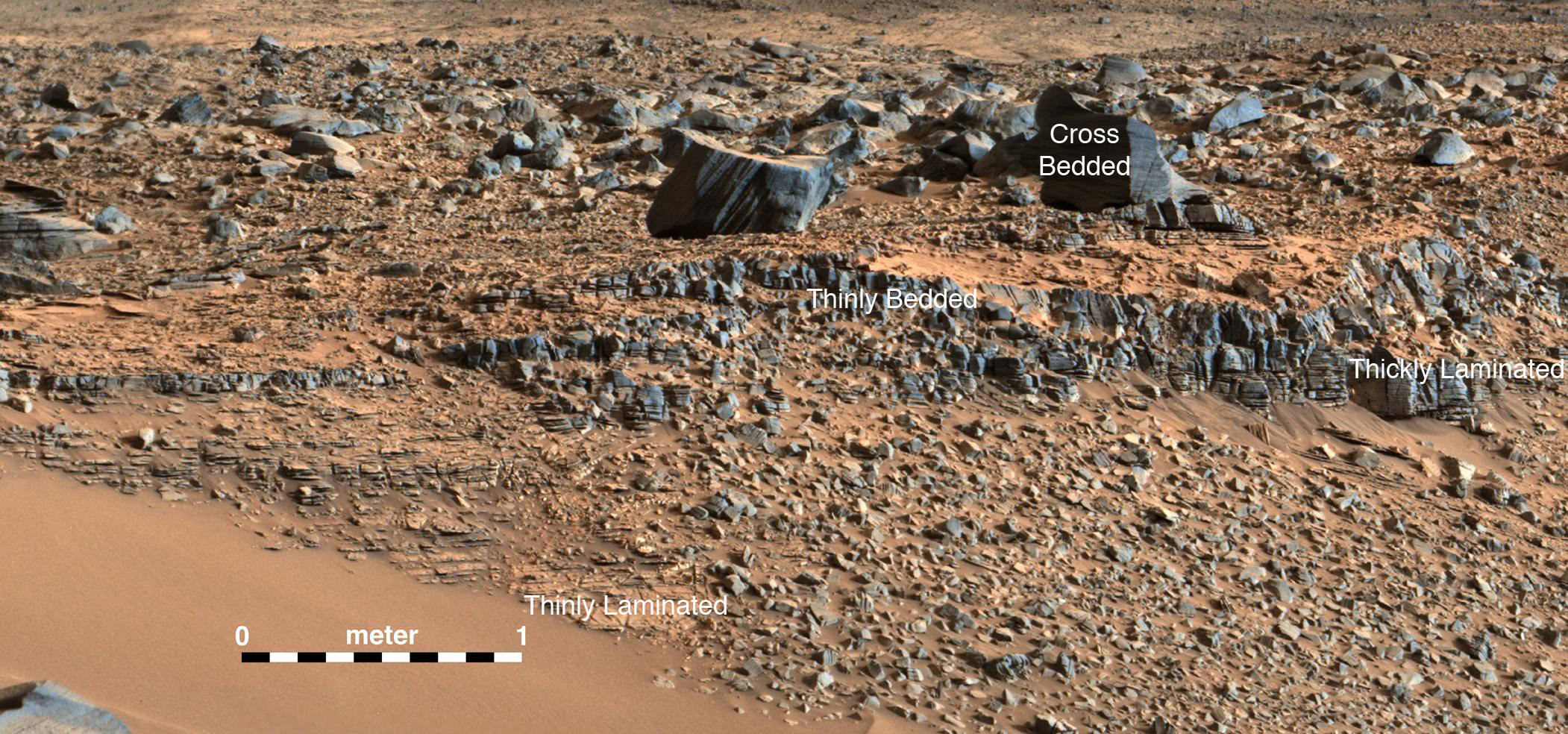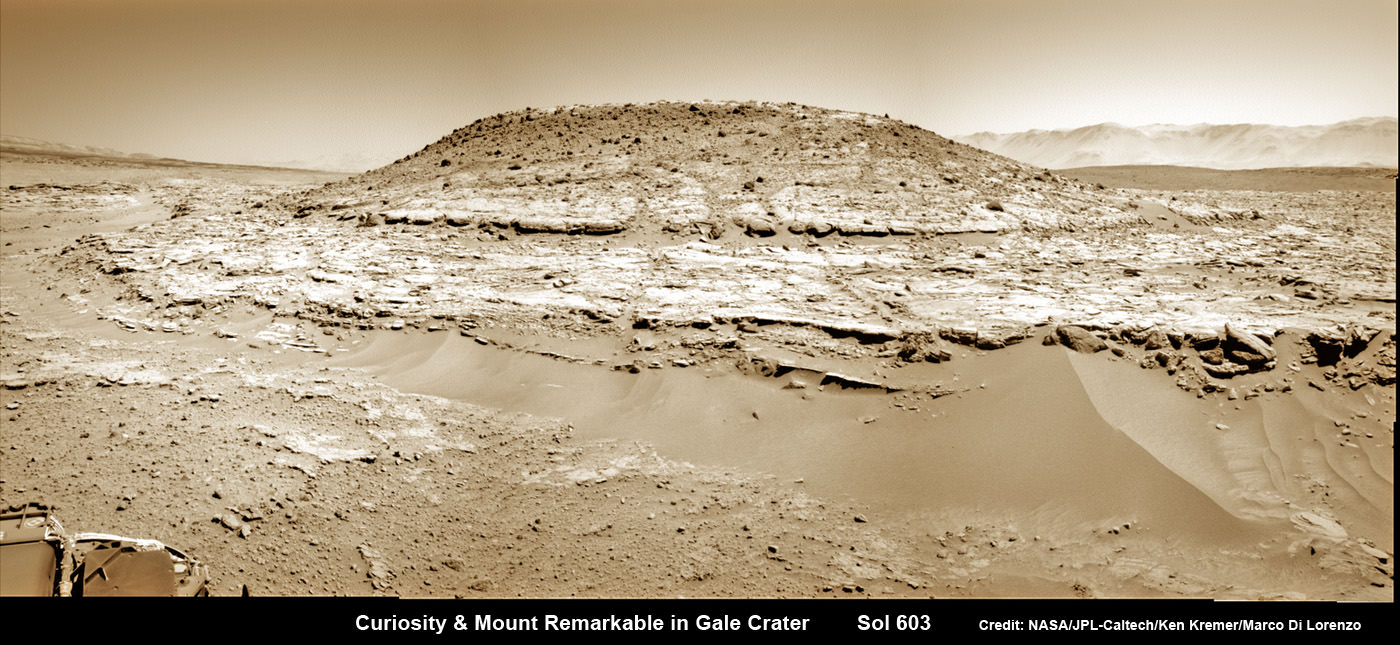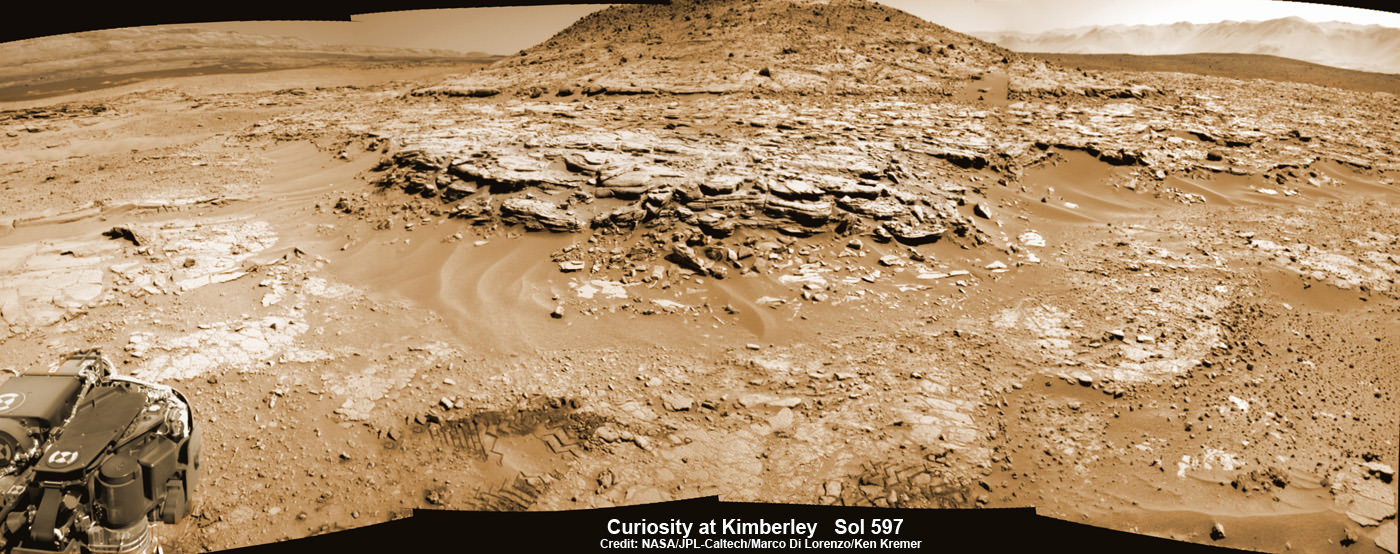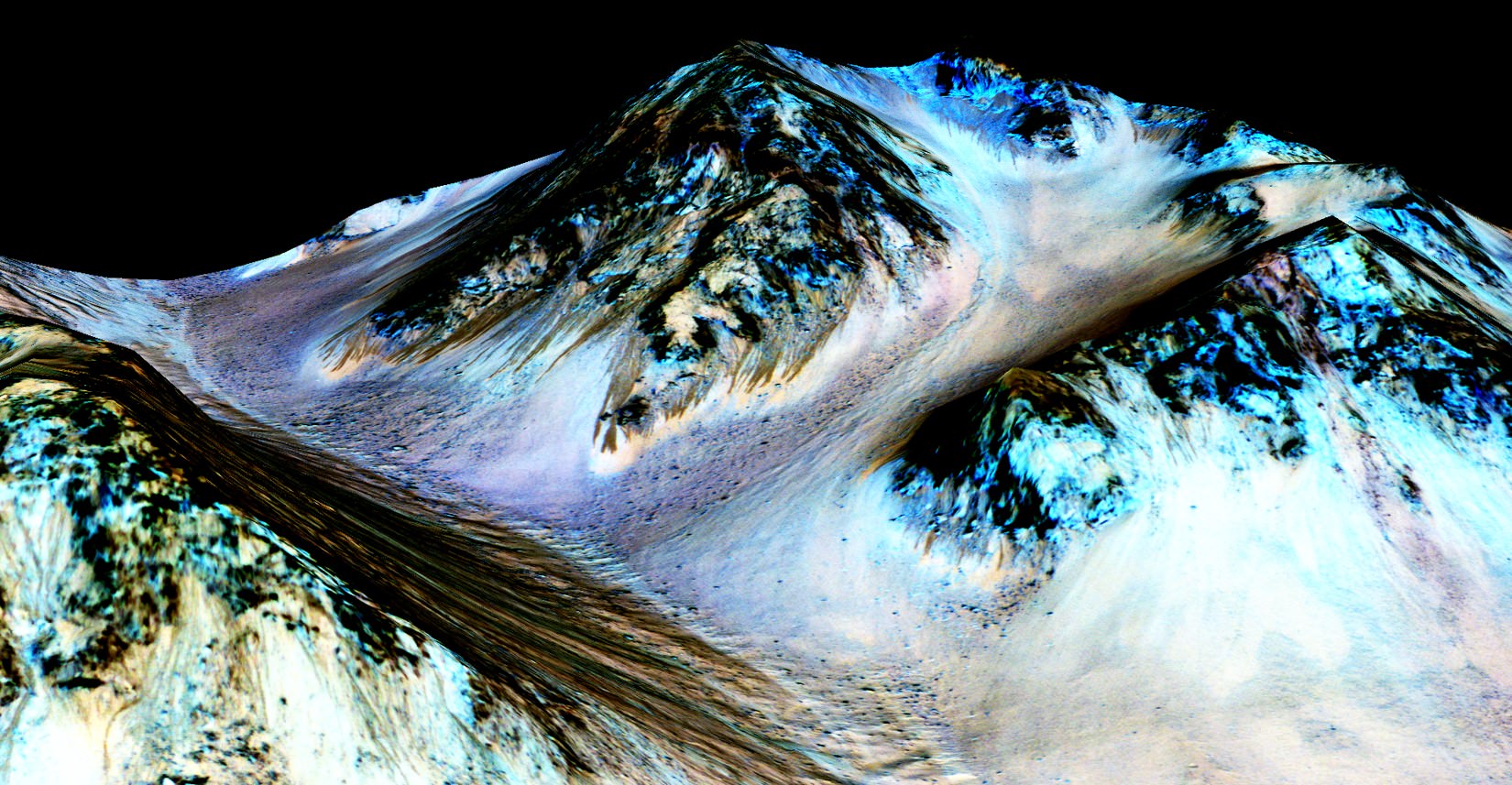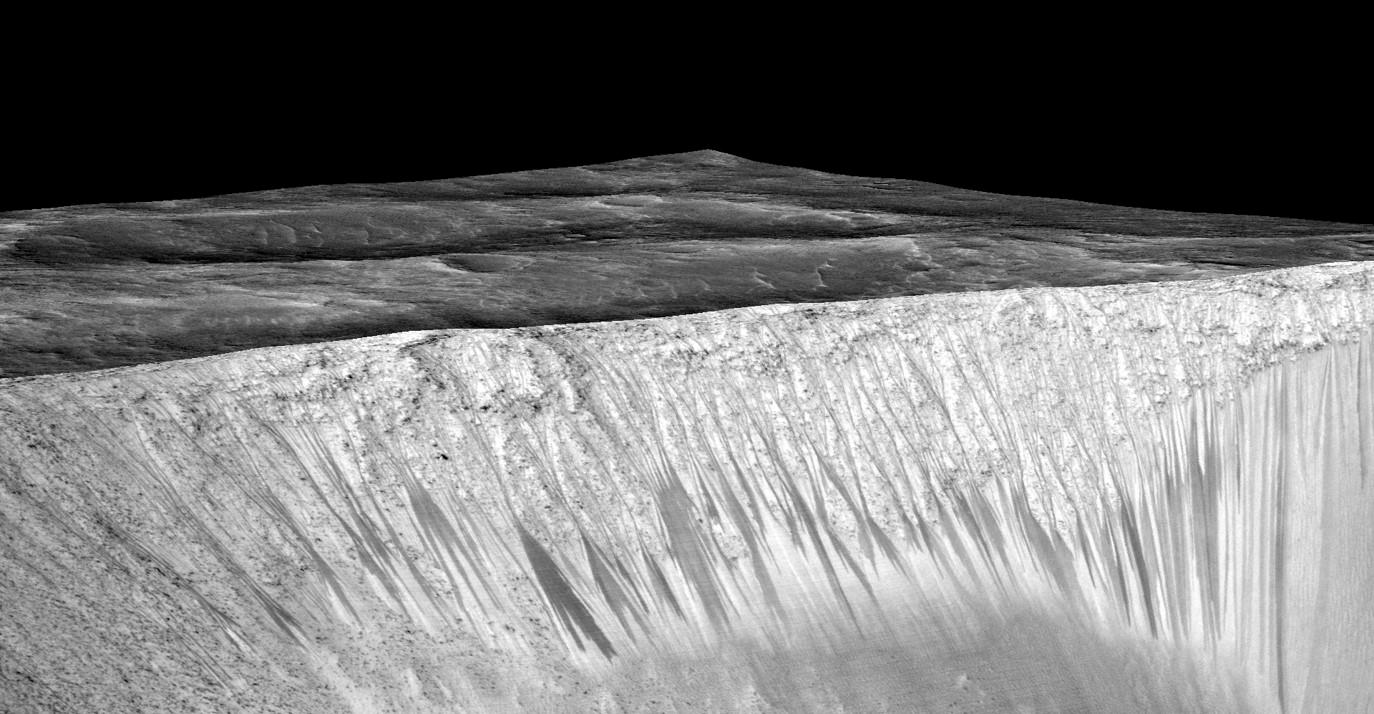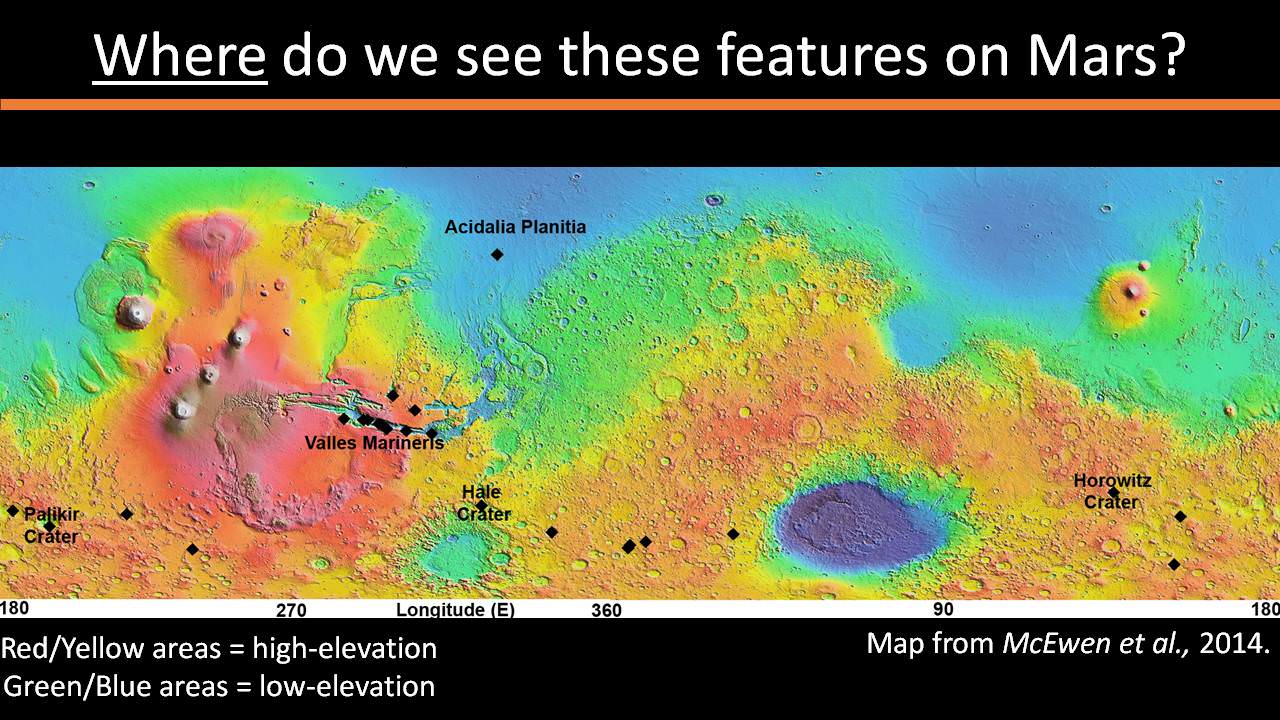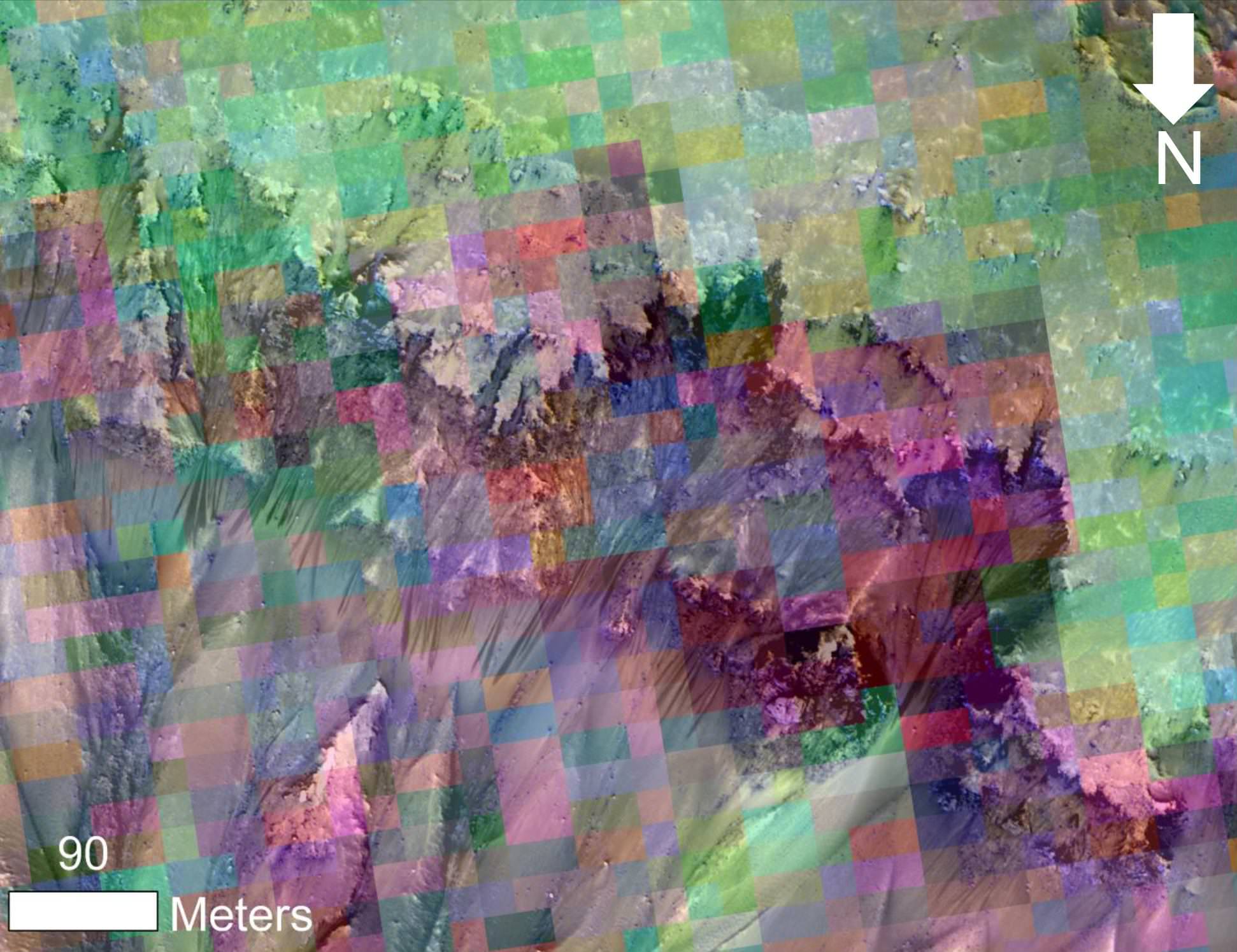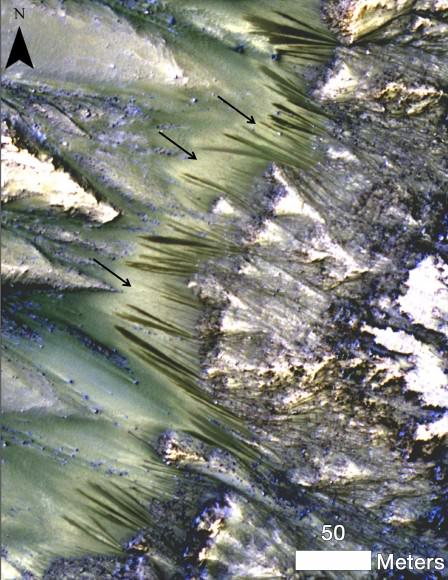After four years on Mars, the Curiosity rover has made some pretty impressive discoveries. These have ranged from characterizing what Mars’ atmosphere was like billions of years ago to discovering organic molecules and methane there today. But arguably the biggest discovery Curiosity has made has been uncovering evidence of warm, flowing water on Mars’ surface.
Unfortunately, now faced with what could be signs of water directly in its path, NASA is forced to enact strict protocols. These signs take the form of dark streaks that have been observed along the sloping terrain of Aeolis Mons (aka. Mount Sharp), which the rover has been preparing to climb. In order to prevent contamination, the rover must avoid any contact with them, which could mean a serious diversion.
These sorts of dark streaks are known as recurring slope lineae (RSLs) because of their tendency to appear, fade away and reappear seasonally on steep slopes. The first RSLs were reported in 2011 by the Mars Reconnaissance Orbiter in a variety of locations, and are now seen as proof that water still periodically flows on Mars (albiet in the form of salt-water).
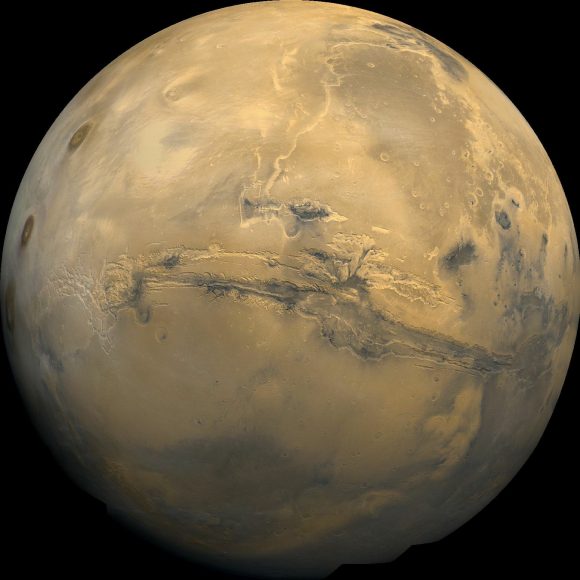
Since that time, a total of 452 possible RSLs have been observed, mostly in Mars’s southern mid-latitudes or near the equator (particularly in Mars’ Valles Marineris). They are generally a few meters wide, and appear to lengthen at the warmest times of the year, then fade during the colder times.
These seasonal flows of salt water are believed to have come from ice trapped about a meter below the surface. Ordinarily, such features would present an opportunity to conduct research. But doing so would cause the water source to be contaminated by Earth microbes aboard Curiosity. And right now, Curiosity has bigger fish to fry (so to speak).
During its planned climb, Curiosity was supposed to pass within a few kilometers of an RSL. However, if NASA determines that the risk is too high, the rover will have to alter its course. Unfortunately, that presents a major challenge, since there is currently only one clear route between Curiosity’s current location and its next destination.
But then again, Curiosity may not have to alter its course at all. Or it could find a route that lets it still accomplish its scientific goals, depending on the circumstances. As Ashwin R. Vasavada, the Project Scientist at the Mars Science Laboratory, told Universe Today via email:
“It may depend on the distance between the rover and a potentially sensitive region, for example. Based on that understanding, we’ll determine the right course of action. For example, it may be possible to achieve Curiosity’s science goals while maintaining a safe distance. Another possible outcome is that we determine that there are no Recurring Slope Lineae on Mount Sharp.”
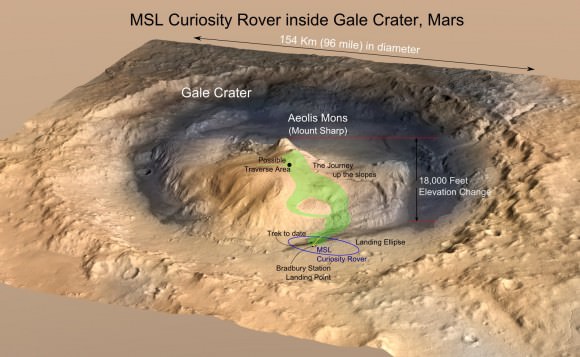
For years, NASA scientists have been seeking to obtain samples from different locations around Mount Sharp. By studying the sedimentary deposits in the mountainside, the rover’s science team hopes to see how Mars’ environment changed over the past 3 billion years. As Vasavada explained:
“Curiosity’s science mission has focused on understanding whether the area around 5-km high Mount Sharp ever had conditions suitable for life. We’ve already found evidence for an ancient, 3-billion-year-old habitable environment out on the plains around the mountain, and in the lowest levels of the mountain.”
“The geology indicates that a series of lakes once was present in the basin of the crater, before the mountain took shape. Curiosity will continue climbing lower Mount Sharp to see how long these habitable conditions lasted. Every step higher we go, we encounter rocks that are a bit younger, but still around 3 billion years old.”
In the end, the job of determining the risk falls to NASA’s Planetary Protection Office. In addition to reviewing the current predicament, the issue of pre-mission safety standards is also likely to come up. Prior to its deployment to Mars, the Curiosity rover was only partially sterilized, and it is currently unknown how long Earth microbes could survive in the Martian atmosphere, or how far they could be carried in Mars’ atmosphere.
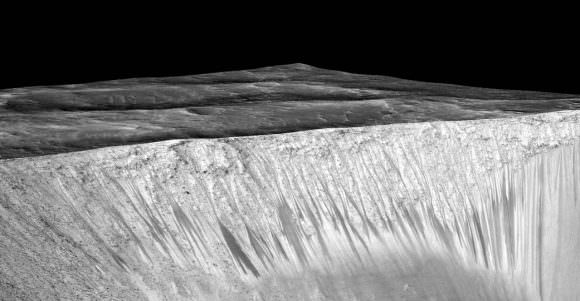
Answering these questions and coming up with new protocols that will address them in advance will come in handy for future missions – particularly the Mars 2020 Rover mission. In the course of its mission, which will include obtaining samples and leaving them behind for possible retrieval by a future crewed mission, the rover is likely to encounter several RSLs.
One of the Mars 2020 rover’s primary tasks will be finding evidence of microbial life, so ensuring that Earth microbes don’t get in the way will be of extreme importance. And with crewed missions on the horizon, knowing how we can prevent contaminating Mars with our own germs (of which there are many) is paramount!
On its currently project path, the Curiosity rover would not get closer than 2 km from the potential RSL (which it is currently 5 km from). And as Vasavada indicated, it is not known at the present time what alternate routes Curiosity could take, or if a diversion in the rover’s path will effect it’s overall mission.
“It’s unclear at this time,” he said. “But I’m optimistic that we can find a solution that protects Mars, allows us to accomplish our mission goals, and even gives us new insight into modern water on Mars, if it is there.”
Further Reading: Nature

